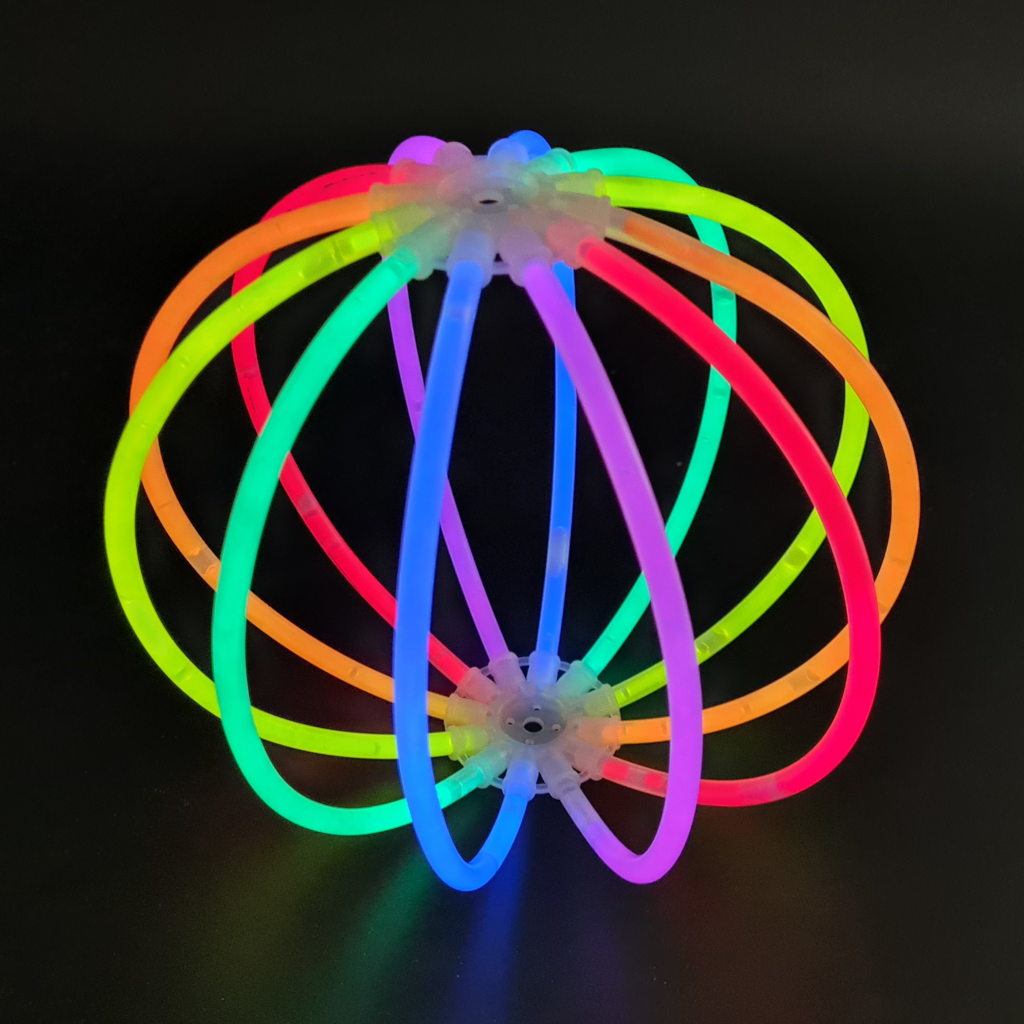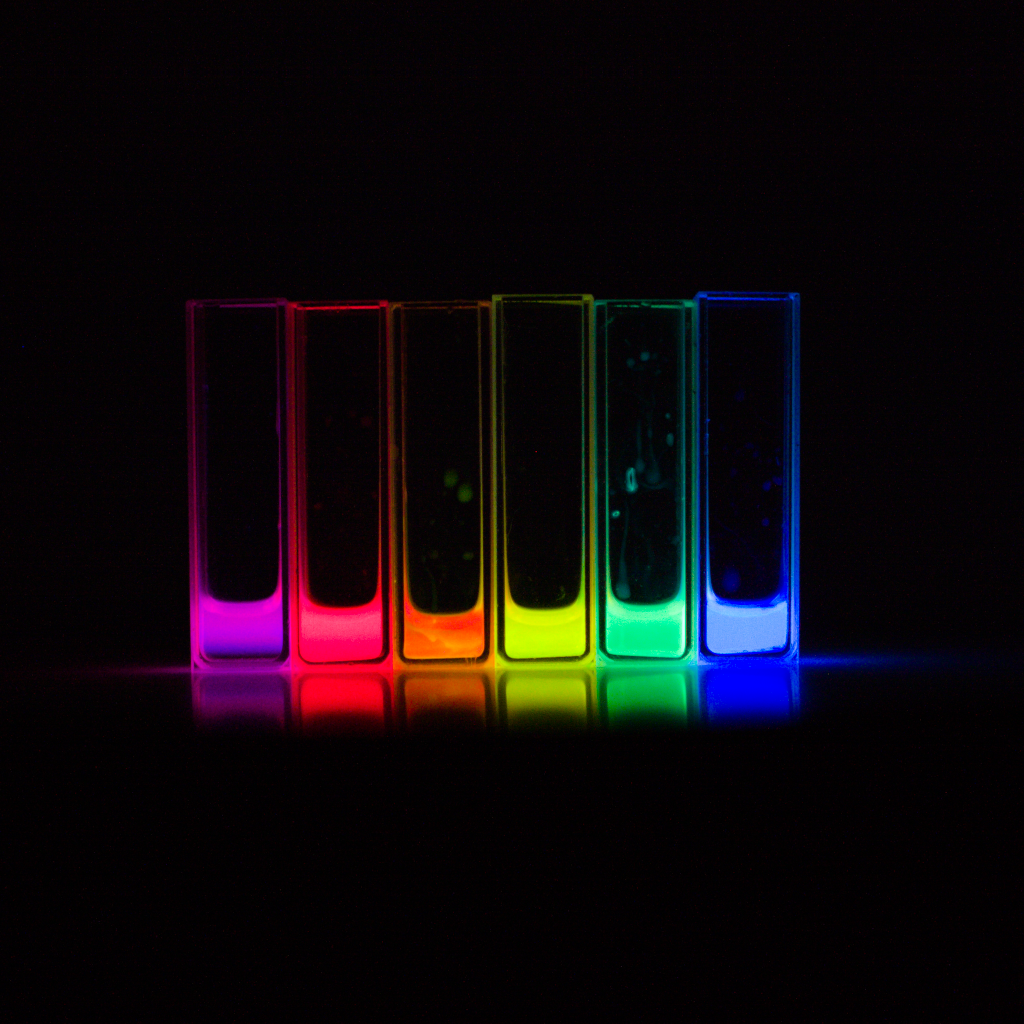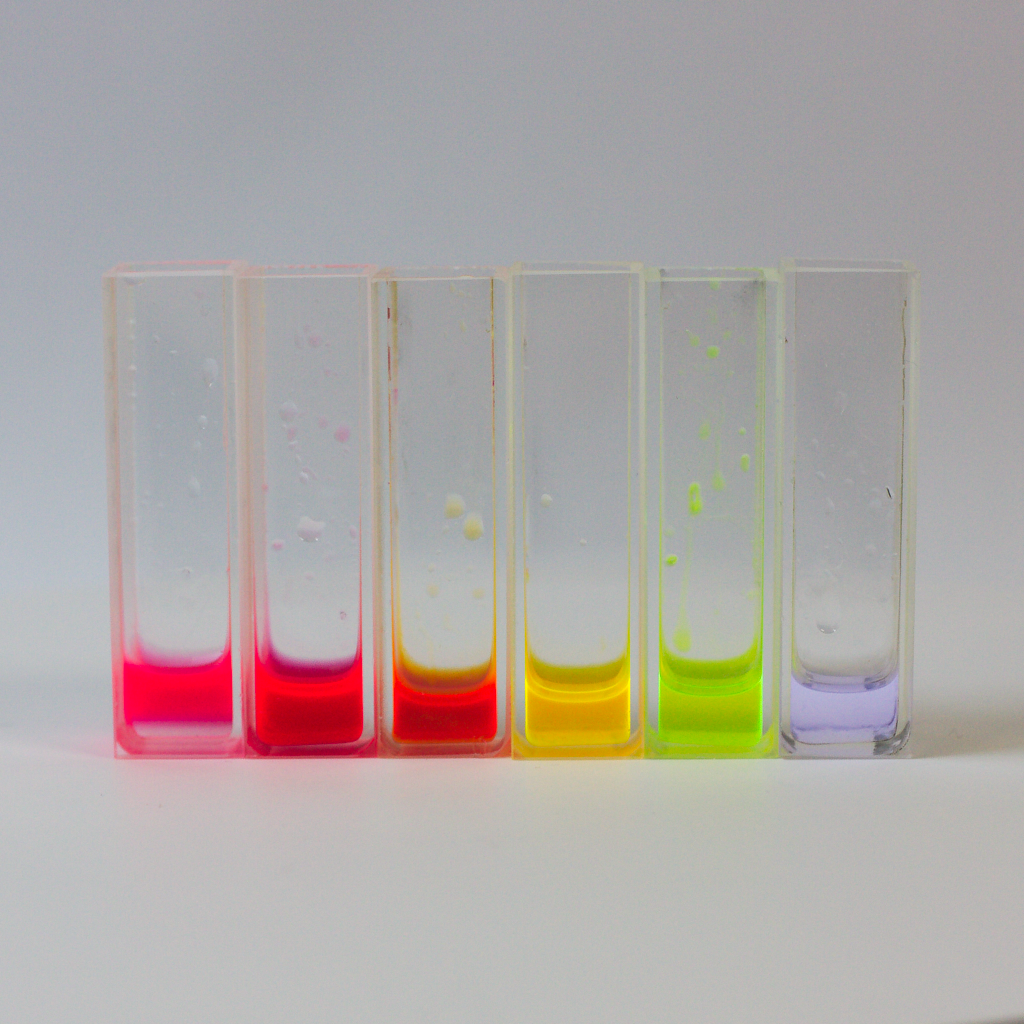


Glow sticks are a fascinating example of chemiluminescence—a form of light emission that takes place without an external light or heat source. In contrast to other light-emitting processes, such as fluorescence or phosphorescence, chemiluminescence produces light through a direct chemical reaction.
This reaction is also responsible for the glow of many creatures, such as fireflies or deep-sea fish. Their biochemical variant is known as bioluminescence. Such creatures use the glow to communicate, find a partner or attract prey.
The principle of glow sticks is based on a chemical reaction between two liquids that only come into contact when the stick is bent. There is a glass tube inside, which breaks when bent and releases a reaction partner. This liquid mixes with the outer solution and starts the chemical reaction.
The main components of the chemical reaction in glow sticks are typically:
The temperature has a strong influence on the intensity and duration of the glow. If a glow stick is placed in an icebox, for example, the chemical reaction slows down and it glows much longer, but less brightly. In hot water, on the other hand, it glows more intensely but for a shorter time.
One of our DIY spectrometers with fiber optic coupling and the following data was used to record the spectra:
The glow sticks were carefully opened to remove the liquids they contained. These were filled into a cuvette for the measurement, in front of which the light guide was then positioned directly.
The recorded spectra show relatively broad emission bands, as is typical for fluorescent organic molecules, in which the fluorescence results from a large number of vibronic transitions. In some cases, two dyes are also contained in a bending light in order to generate the resulting light by additive color mixing.
The investigation of glow sticks with the DIY spectrometer is not only an exciting experiment for demonstrating chemical processes, but also offers the opportunity to learn basic spectroscopic techniques. Glow sticks are an impressive example of how chemical energy can be converted directly into visible light—without any external power source.
With this experiment, students and other interested parties can gain direct access to the fascinating world of chemistry and spectroscopy and discover that science can not only be educational, but also entertaining!
If you would also like to perform the experiment and need help setting up the spectrometer or carrying it out, please contact us. We are happy to help!
Exciting experiments can also be carried out by mixing the liquids of two different glow sticks. This does not always result in a mixed color from a resulting additive color mixture, as might be expected.
In the case of the glow sticks used for this application description, for example, a mixture of the liquid of the yellow glow stick with that of the blue glow stick continued to glow yellow while the blue glow disappeared completely.
There are several possible explanations for this, which could be investigated further:
It is probably even due to a combination of optical (e. g. energy transfer or internal filter effects) and chemical interactions that result in the blue light source no longer coming into its own in the mixture.
 Would you like to replicate the experiment—in your laboratory or teaching environment? Feel free to contact us—we will assist you with planning, setup, calibration, and selecting the right components. Eureca offers advice based on many years of expertise in optoelectronics, optics and spectroscopy—from DIY setups to OEM solutions. Feedback is expressly welcome: Please share your experiences, results, or suggestions for improvement with us.
Would you like to replicate the experiment—in your laboratory or teaching environment? Feel free to contact us—we will assist you with planning, setup, calibration, and selecting the right components. Eureca offers advice based on many years of expertise in optoelectronics, optics and spectroscopy—from DIY setups to OEM solutions. Feedback is expressly welcome: Please share your experiences, results, or suggestions for improvement with us.
Here you can easily ask a question or inquiry about our products:
Last update: 2025-31-10



